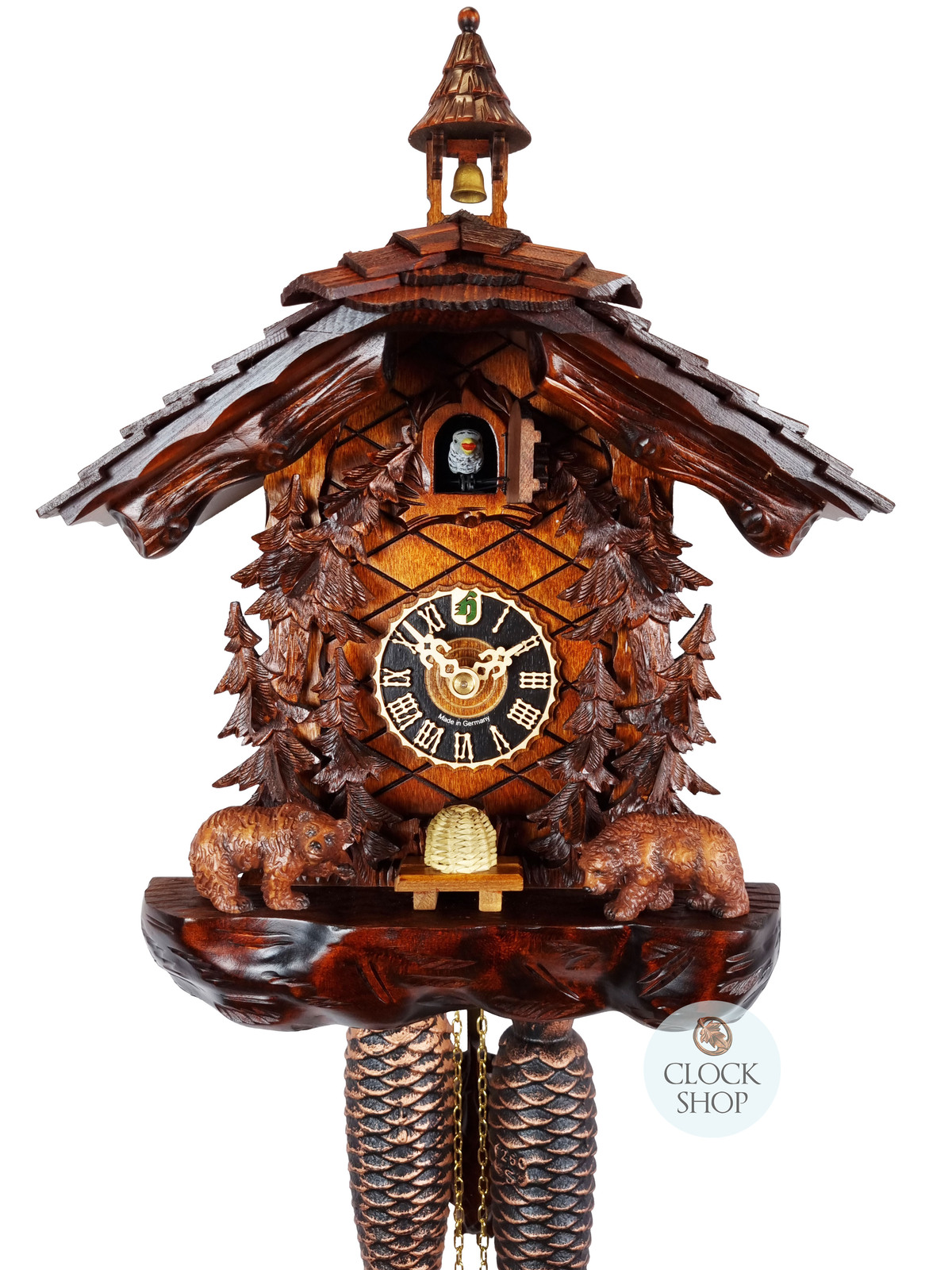

He came back with new ideas and new tools that he used in manufacturing.
Cuckoo clocks full#
In 1712 Friedrich Dilger, from the small village of Urach, left for France for a full year. Itinerant sellers of clocks while traveling in neighboring regions learned new techniques. In 1690, a clock making industry developed in the region of the High Black Forest. For a very long time, watchmaking remained a domestic industry in this region. The inhabitants of the black forest continued to improve their techniques. Making clocks was a way for them to add a little income to their slim wages.

These "Häuslers" then had to work for other farmers to survive during the long winter months.

In the Black Forest tradition, only the eldest son inherited the farm.

Most of the inhabitants who made clocks were not wealthy farmers but rather the "Häuslers" (peasants without family and land). It was practiced almost exclusively in the Black Forest, in the Bôhmerwald west of the Bohemian plateau, but also in Switzerland. The first clocks were rudimentary, The mechanisms were made of wood, and instead of the pendulum, a piece of wood called "Waag" was placed above the dial and moved from front to back. The clockwork industry with wooden cogs was generally linked to the beverage industry, and also, in some cases, to the jewelry store. Until then inhabitant were only using sundials or hourglasses to get an idea of the time. This is where the tradition of making clocks in this country began. The farmer, to whom he showed his clock, was so impressed by this precise mechanism which kept the time better than anything he knew before, decided to build a clock himself. Woodworking was done mainly during winter time when the snow blocked the roads and confined the people in their houses.Īround 1630 a trader from the black forest, on his return from a trip from abroad, came back with a clock, which supposedly came from the country of Bohemia, (today the Czech Republic). The inhabitants of the black forest have always worked and carved wood using local wood which was one of the only natural resources in this region. The history of clock making in the black forest began around 1630. It seems that at the very beginning the first cuckoo clocks came from the black forest and that over time they arrived in France and of course in Switzerland. We hope you enjoy browsing in our online shop while searching for your very own Black Forest clock. They have the same high-quality, hand-made wooden cases, but are much simpler to operate since it only requires changing standard C size batteries about once a year. Many of our cuckoo clocks are additionally furnished with a high-quality musical mechanism from the company Reuge in switzerland.Īll Black Forest cuckoo clocks with a mechanical movement include a certificate of authenticity from the VDS (Black Forest Clock Association).Īlternatively, you can also choose a clock with a quartz movement. Traditional mechanical clocks where the weights operate a gear train in the clock's interior are available with 1-day movements or 8-day movements, which only requires winding once a week. The large assortment of chalet-style clocks and cuckoo clocks with wooden carvings is completed with a collection of cuckoo clocks with modern designs. You can find the world-famous cuckoo clocks on our website in all of their diverse forms. We offer a rich selection of the most different Black Forest clocks. The process includes quality controls and secure packaging of all products, as well as qualified answers to any questions you may have, prompt and courteous customer service and a selection of several different convenient payment methods. Our online shop makes it possible for you to buy these artisanal products conveniently and securely online. Here in our Cuckoo clock store you find nothing but 100% original Black Forest clocks from the most renowned producers from this region.


 0 kommentar(er)
0 kommentar(er)
